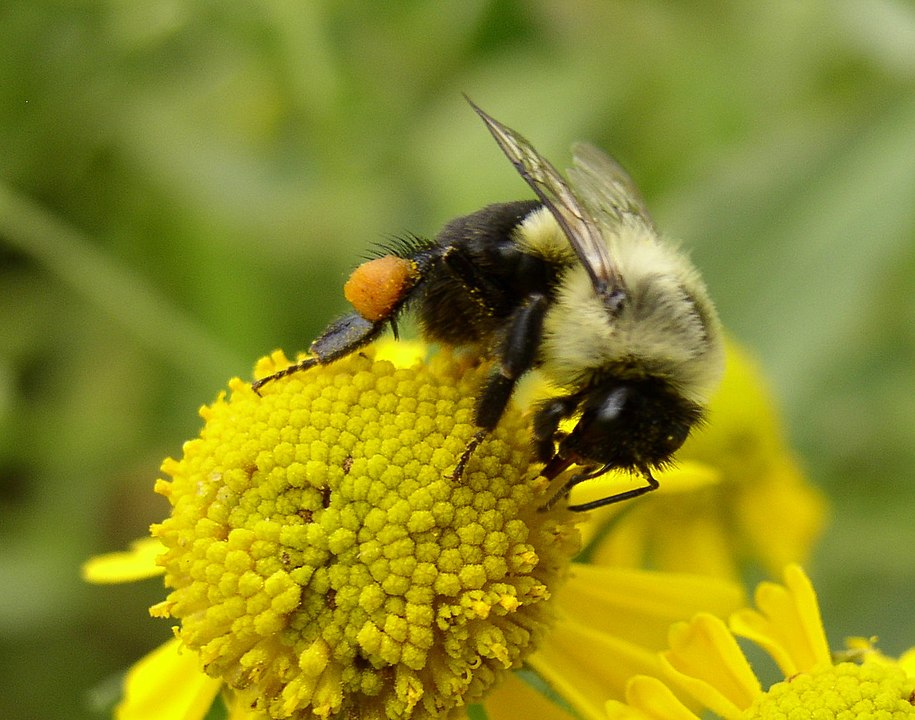Reaction to study concluding that glyphosate affects the thermoregulation of bumblebee colonies
Glyphosate is one of the most widely used herbicides in the world. New work published in Science reveals that it significantly impairs the ability of bumblebees to maintain the temperature of their hive, a hitherto unsuspected effect that may lead to the decline of this already endangered species, which is essential for pollination.

Ignasi Bartomeus glifosato abejorros - EN
Ignasi Bartomeus
Ecologist. 'Ramón y Cajal' researcher working at EBD-CSIC (Doñana Biological Station)
Although field studies show that the widespread use of chemicals such as herbicides or pesticides has a clear negative effect on biodiversity, trials to approve their use continue to indicate that their toxicity on species important for ecosystem functioning, such as bees, is low.
However, the study by Weidenmüller et al. uses an elegant experimental design to show that very small effects of glyphosate, a controversial herbicide, at the level of isolated bumblebee individuals have much more serious repercussions at the colony level.
Bumblebees live in colonies of hundreds of workers, and so the effects on their populations have to be measured at this level, and it is irrelevant that a chemical is not lethal to single individuals if it is reducing the ability of the colony to survive. In this case, glyphosate reduces the ability of bumblebees to keep the colony warm, and this directly affects their ability to reproduce.
Nature is a complex system and we cannot understand how it works just by studying its parts; we need to understand how it works as a whole.
Félix Torres González glifosato abejorros - EN
Félix Torres González
Professor in the Department of Animal Biology, Parasitology, Ecology, Soil Science and Agricultural Chemistry at the University of Salamanca.
Since the beginning of the massive use of glyphosate as a herbicide that is harmless to wildlife, entomologists' reticence has been constant and, in view of what has been published recently, not without meaning. It is true that in tetrapods, as they lack the EPSPS-synthase enzyme and therefore show different routes in the biosynthesis of aromatic amino acids than plants, glyphosate seems to have little or no toxicity for these organisms. However, in insects (especially pollinators that regularly frequent the vegetation treated with this product), the evidence of more or less severe damage to these animals is increasingly abundant and clear.
This is alarming because of the harmful effects on these non-target organisms of agrochemical treatments, and the article in the journal Science is a further link in this chain of certainty regarding the toxicity of glyphosate on bees (in this case bumblebees).
The results of this work, which uses an appropriate methodology, show an "interference" of this herbicide in the cycle of bumblebee colonies, which, without being directly lethal, affects their thermoregulation and, therefore, the viability of the colony over time. The study is rigorous and, as I say, adds further evidence of the need to view biocides (glyphosate in particular, in this case) with the utmost caution and the need to extend studies on their environmental safety.
Furthermore, the need to carry them out from a perspective that also includes invertebrate fauna, which is sometimes marginalised in studies on the safety and innocuousness of these products, is evident. Thus, the article by Weidenmüller et al. is current, relevant and its results will certainly be taken into account by science, adding to and reinforcing the evidence known to date.
Celeste Azpiazu glifosato abejorros - EN
Celeste Azpiazu
Postdoctoral researcher at the Institut de Biologia Evolutiva (CSIC- Universitat Pompeu Fabra).
The first strength of this study is that they have found direct effects of a herbicide, glyphosate, on bumblebees. The indirect effects of herbicides on pollinators by reducing flower availability are clear. But these researchers show how the combined effects of exposure to this pesticide and resource limitation can decrease the ability of bumblebees to thermoregulate.
Glyphosate has gone through a risk assessment process to make sure it has no impact on human, animal or environmental health. To verify glyphosate is safe for pollinator species bees are tested. However, this newly published result shows this herbicide is on the market without being entirely safe for pollinators, which shows that current risk assessment programmes have limitations. For example they are based on tests that almost exclusively assess mortality, and here they have justified that it is important to assess sublethal effects as well. Glyphosate may affect the hatching behaviour of larvae by affecting their development.
On the other hand, these effects have been revealed when less food (sugar water) was provided to the bumblebees. We know that pollinator decline is due to a combination of several factors, including pesticides and resource constraints. The approach of this study assessing the combined effects of stresses is useful in broadening our understanding of bee health.
In conclusion, the present research helps to substantiate the need to incorporate new risk assessment protocols for bees to ensure their conservation.
- Anja Weidenmüller (University of Konstanz, Centre for the Advanced Study of Collective Behavior)
- Christoph Kleineidam (University of Konstanz, Centre for the Advanced Study of Collective Behavior)
- Alica Schwarz (University of Konstanz, Centre for the Advanced Study of Collective Behavior)
- Andrea Meltzer (University of Konstanz, Max Planck Institute of Animal Behavior)
- Stefanie Neupert (University of Konstanz, University of Otago)
- Research article
- Experimental study
- Animals
